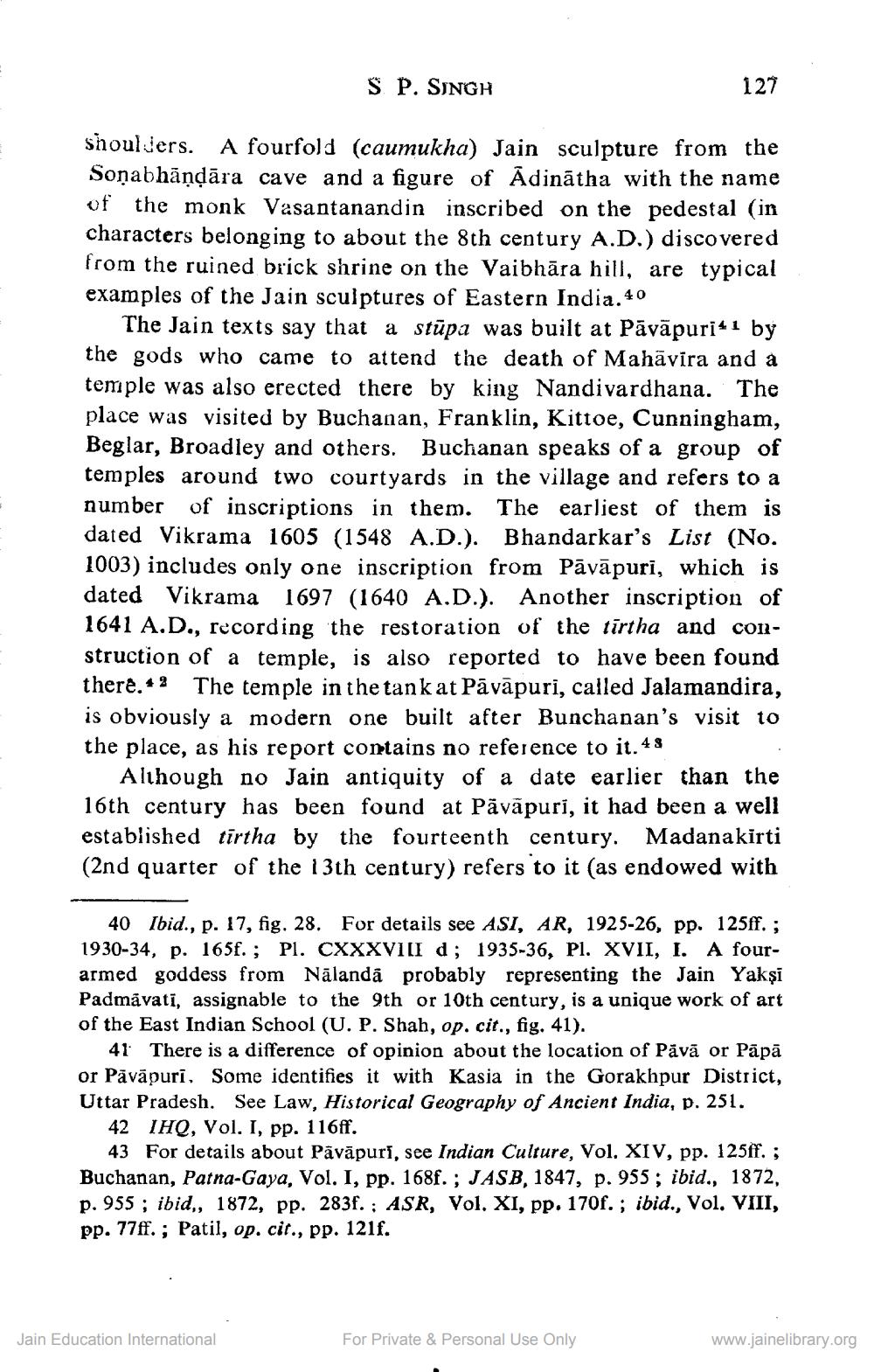________________
S P. SINGH
127
shoulders. A fourfold (caumukha) Jain sculpture from the Soņabhāņdāra cave and a figure of Ādinātha with the name of the monk Vasantanandin inscribed on the pedestal (in characters belonging to about the 8th century A.D.) discovered from the ruined brick shrine on the Vaibhāra hill, are typical examples of the Jain sculptures of Eastern India. 40
The Jain texts say that a stūpa was built at Pāvāpuri* i by the gods who came to attend the death of Mahāvīra and a temple was also erected there by king Nandivardhana. The place was visited by Buchanan, Franklin, Kittoe, Cunningham, Beglar, Broadley and others. Buchanan speaks of a group of temples around two courtyards in the village and refers to a number of inscriptions in them. The earliest of them is dated Vikrama 1605 (1548 A.D.). Bhandarkar's List (No. 1003) includes only one inscription from Pāvāpuri, which is dated Vikrama 1697 (1640 A.D.). Another inscription of 1641 A.D., recording the restoration of the tīrtha and construction of a temple, is also reported to have been found there.2 The temple in the tank at Pāvāpuri, called Jalamandira, is obviously a modern one built after Bunchanan's visit to the place, as his report contains no reference to it.48
Although no Jain antiquity of a date earlier than the 16th century has been found at Pāvāpuri, it had been a well established tirtha by the fourteenth century. Madanakirti (2nd quarter of the 13th century) refers to it (as endowed with
40 Ibid., p. 17, fig. 28. For details see ASI, AR, 1925-26, pp. 125ff. ; 1930-34, p. 165f.; Pl. CXXXVII d; 1935-36, Pl. XVII, I. A fourarmed goddess from Nālanda probably representing the Jain Yakşi Padmavati, assignable to the 9th or 10th century, is a unique work of art of the East Indian School (U. P. Shah, op. cit., fig. 41).
41 There is a difference of opinion about the location of Pāvā or Pāpā or Pāvāpuri, Some identifies it with Kasia in the Gorakhpur District, Uttar Pradesh. See Law, Historical Geography of Ancient India, p. 251.
42 IHQ, Vol. I, pp. 116ff.
43 For details about Pāvāpuri, see Indian Culture, Vol. XIV, pp. 125ff. ; Buchanan, Patna-Gaya, Vol. I, pp. 168f.; JASB, 1847, p.955; ibid., 1872, p. 955; ibid, 1872, pp. 283f. ; ASR, Vol. XI, pp. 170f. ; ibid., Vol. VIII, pp. 77ff.; Patil, op. cit., pp. 121f.
Jain Education International
For Private & Personal Use Only
www.jainelibrary.org




